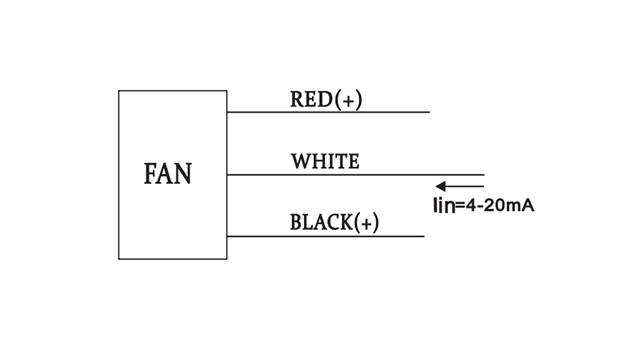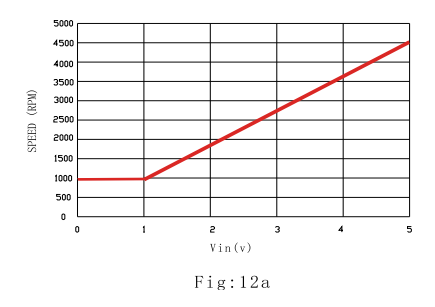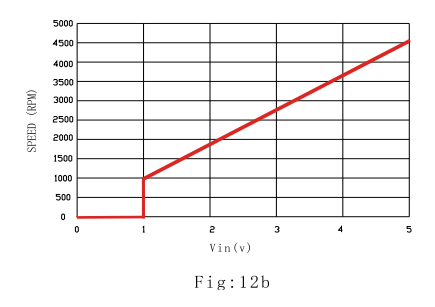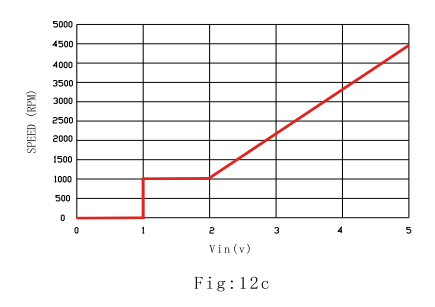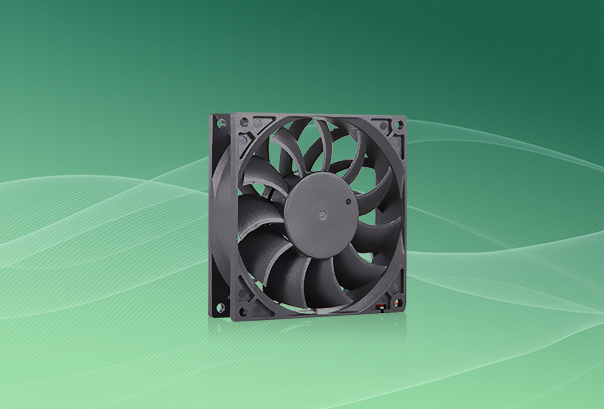
Every model undergoes rigorous aerodynamic analysis and anechoic chamber test to achieve minimum noise under high airflow and air pressure conditions.
High precision maintenance-free ball bearing system provides superb reliability.
Frame and fan blade meet UL 94V-0 flammability rating.
Every model features locked rotor protection and polarity protection, and offers optional frequency generator or rotation detector function.
All DC fans are 100% balanced to guarantee low vibration and excellent durability.
All DC fans are 100% test after production to ensure our customer receive well-working products.
| SERIES CODE | EK EKE EKA BFS BFB |
| FRAME SIZE | 8025:80(L)*80(W)*25MM(H) 9225:92(L)*92(W)*25MM(H) ........ |
| SPEED(RPM) | L:LOW M:MEDIUM H:HIGH V:VERY HIGH S:SUPER HIGH E:EXTERNAL HIGH G:GRAND HIGH U:ULTRA HIGH |
| OPERATION VOLTAGE(V) | 05: DC 5V 12: DC 12V 24: DC 24V 48: DC 48V |
| BEARING TYPE | B: BALL BEARING S: SLEEVE BEARING HY:HYDRAULIC |
| FRAME TYPE | B: BALL BEARING S: SLEEVE BEARING HY:HYDRAULIC |
| SIGNAL OUTPUT | F : FREQUENCY GENERATOR OUTPUT (SPEED SENSOR) OR TACH OUTPUT R : ROTATION DETECTOR OUTPUT (FAILURE DETECTOR) |
| SIGNAL OUTPUT VOLTAGE | 00:VCC (OPEN COLLECTOR) |
When the power switch is turned on to supply current to the fan, the current is zero and starts to increase gradually until the fanhas achieved its maximum sped and the rated current. The maximum current at startup is equal to the free runningcurrent(orless in case the rotor is locked at start up).
The fan will achievethe rated speed within 5 seconds(see Fig.1a).
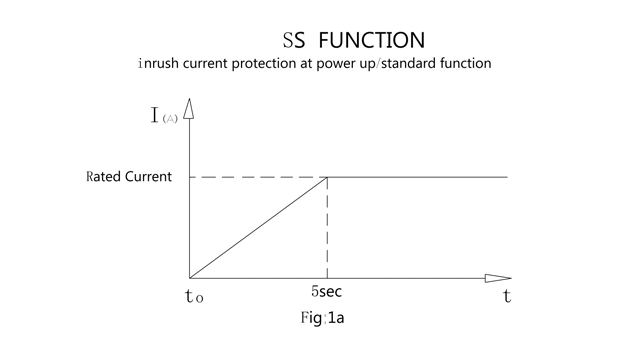
Auto Start function ensures that the fan motor will automatically restart in case the blade is blocked and then it is released. When the rotor is locked, the fan current is reduced to zero and the fan is trying every 5 seconds to restart with soft start by reverting to the SS function (see Fig.2a).
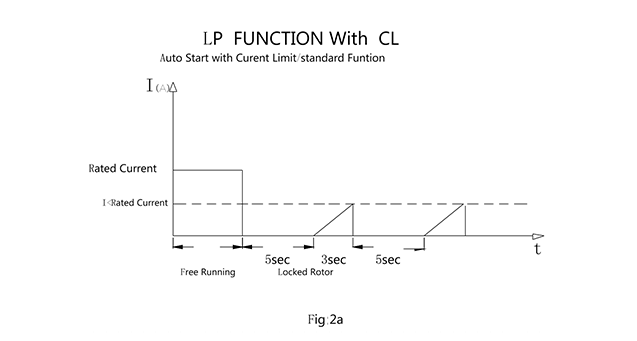
This is an open collector output which provides a square wave signal if this opencollector output is connected to a "PULL UP"resistor and is powered by the power supply voltage which is compatible with the input of the reading device(such as TTL input of the computer etc.). The maximum collector voltage maybe up to 72VDC and the maximum collector current is 10mA. The power supply of the reading device must have the same ground potential as the fan(see Fig.3a and Fig.3b).
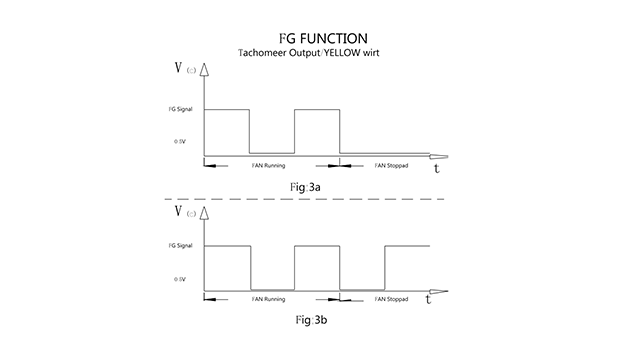
This is an open collector function with the same hardware as the FG function mentioned above. The output signal is LOW when the fan is Rotating and it is set HIGH when the fan is stopped or it is powered OFF(see Fig.4a).
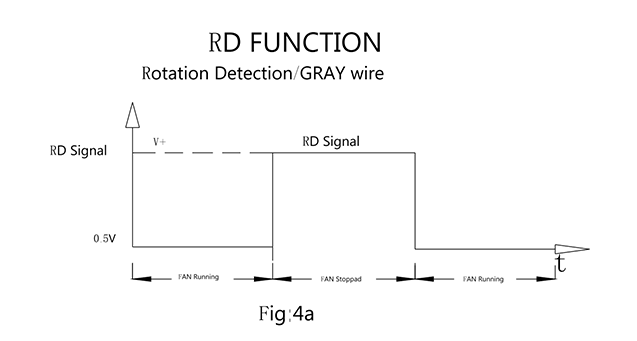
This is an open collector function with the same hardware as the FG function mentioned above. The output signal is HIGH when the fan is Rotating and it is LOW when the fan is stopped(see Fig.5a). This output can be connected in parallel to theRDb of an array of fans ending to a single alarm device to warn in case any one fan has stopped.(See article about MULTIFAN ALARM for connection)
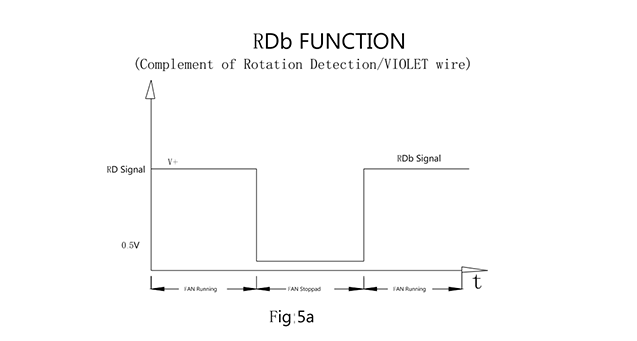
This is an open collector function with the same hardware as the FG function mentioned above. The output signal is LOW when the fan is rotating normally and it is HIGH when the fan speed is rotating below 70% of its rated target speed. The reasons of slow rotation maybe aging or reduced power supply voltage(see Fig.6a).
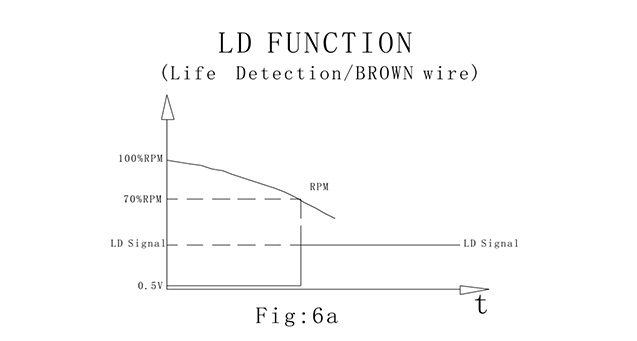
This function detects the power supply voltage and allows operation up to the rated maximum operating voltage. Typicaly the maximum operating voltage(unless otherwise specified) is 20% over the specified rated voltage. If the power supply voltage increases over the 20% limit the fan will stop running and the power supply current will be reduced essentially to zero. The maximum over-voltage protection range is twice the value of the rated voltage. For example if the rated voltage is 24V, the maximum voltage that can be applied accidentally is 48V.
Likewise for a 12V fan the maximum applied over-voltage is 24V(See Fig.7a).

When this function is applied, the upper and lower temperatures may be selected as well as the choice of maintaining minimum RPM below the minimum temperature chosen. The CS(constant speed), SS(soft start function) and CL(Current Limit) functions are included. There are three kinds of control way. Please check the Fig. below.
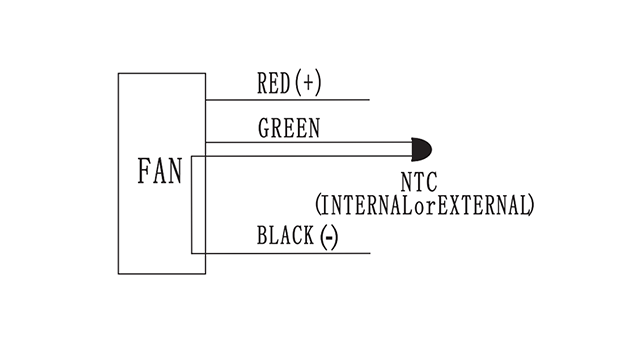
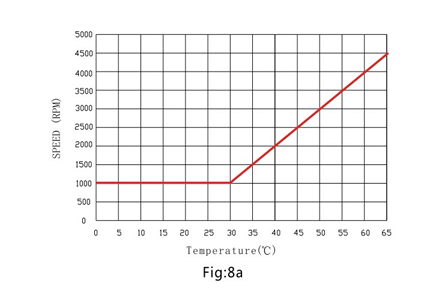
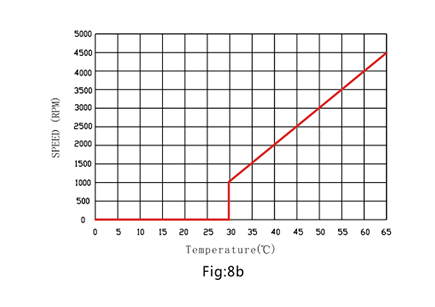
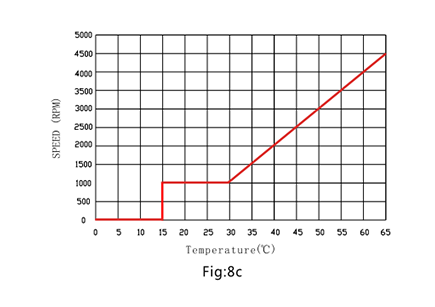
With this function the speed can be controlled using an external variable resistor.
This resistor may have any maximum value from 10K to 100K. The fan speed will vary linearly and is proportional to the % change of the resistor value, corresponding to the same % change of the maximum speed. The CS(constant speed), SS(soft start function) and CL(Current Limit) functions are included. There are three kinds of Control way, please check the Fig. below:
{ VR=(0-100K)}
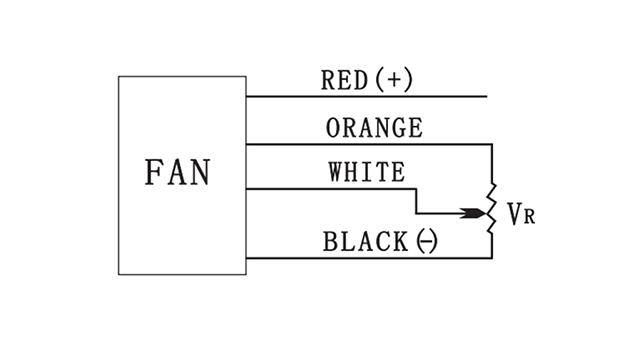
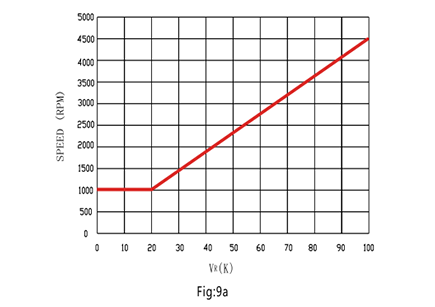
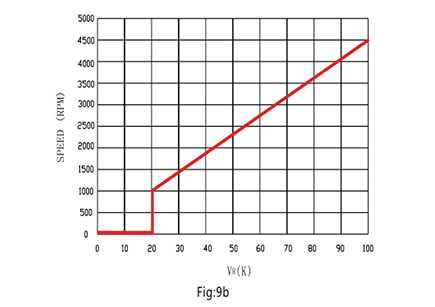
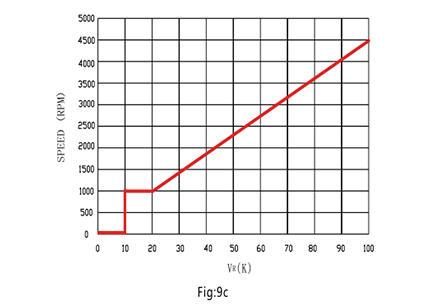
With this function the current is limited during the Lock period.(See Fig.10a).
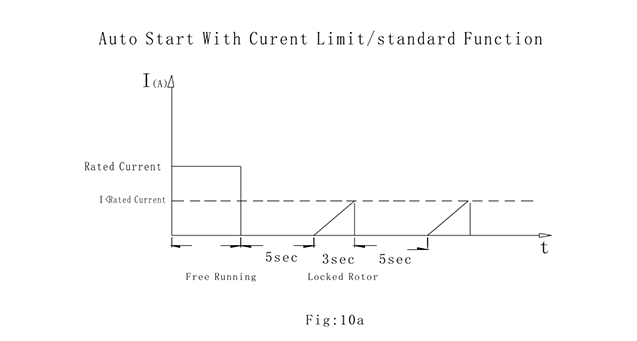
This is a very important function because it allows the fan motor to operate safely over a very large power supply voltage range. For example if the fan motor is designed to run at 4200 RPM at the rated voltage of 48 Volts, the fan motor will maintain the same RPM even when the supply voltage varies from 48 to 72 volts. The fixed CS function is preset internally and the maximum RPM is the rated RPM.(See Fig.11a)
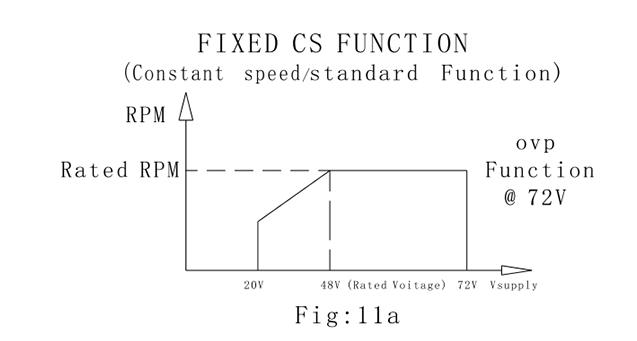
With this function the speed can be controlled by applying an external DC Voltage signal. This voltage input "Vin"may have any value from OV to 10 V(standard value is 0 to 5V). The fan speed will vary linearly and is proportional to the% change of the "Vin"value, corresponding to the same % change of the maximum speed.
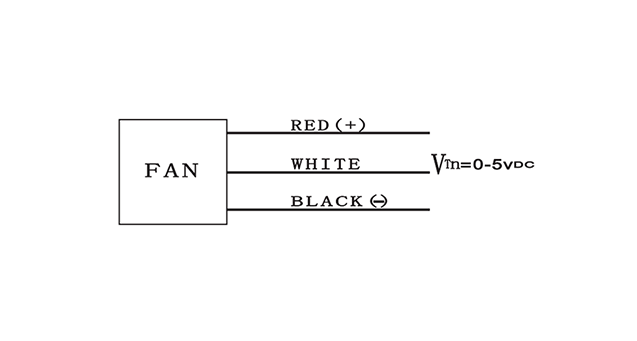
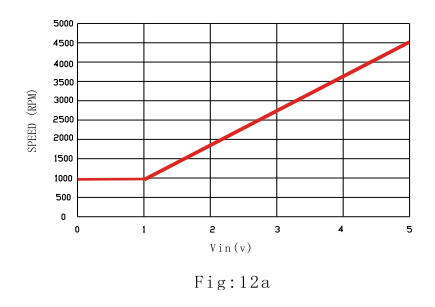
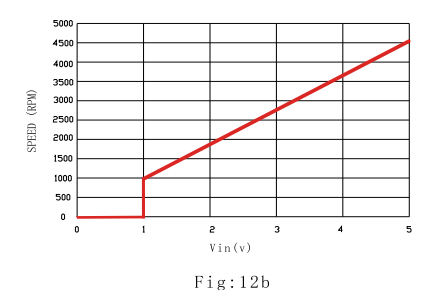
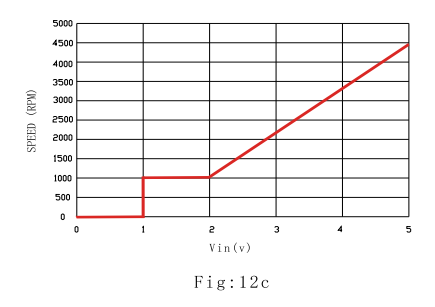
With this function the speed can be controlled by applying an external Current Source Signal. This current input "Tin"may have any value from 4 mA to 50 mA(standard value is 4to 20mA). The fan speed will vary linearly and is proportional to the % change of the lin value, corresponding to the same % change of the maximum speed. There are three kinds of control way, please check the Fig. below:
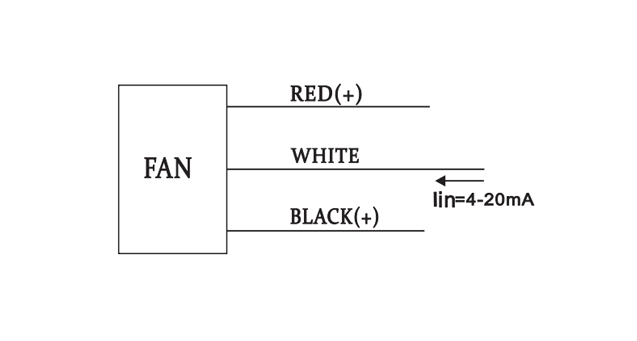
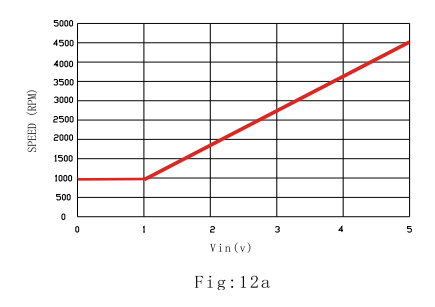
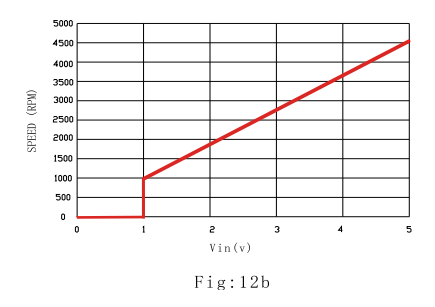
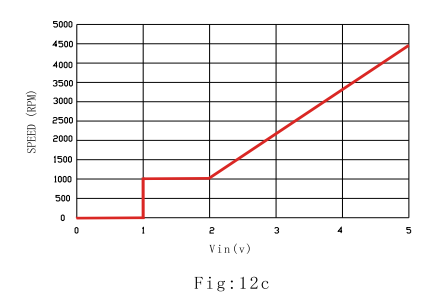
With this function the speed can be controlled by applying a pulse width modulated signal whose frequency maybe in the range of 30 Hz to 30 KHz and the max. pulse height "HIGH"maybe from 3 V to 10 V. The maximum pulse height "LOW"is 0.8V. The fan speed will vary linearly and is proportional to the% change of the Duty Cycle value, corresponding to the same % change of the maximum speed. The CS(constant speed), SS(soft start function) and CL(Current Limit) functions are included. Three kinds of control way as below:
